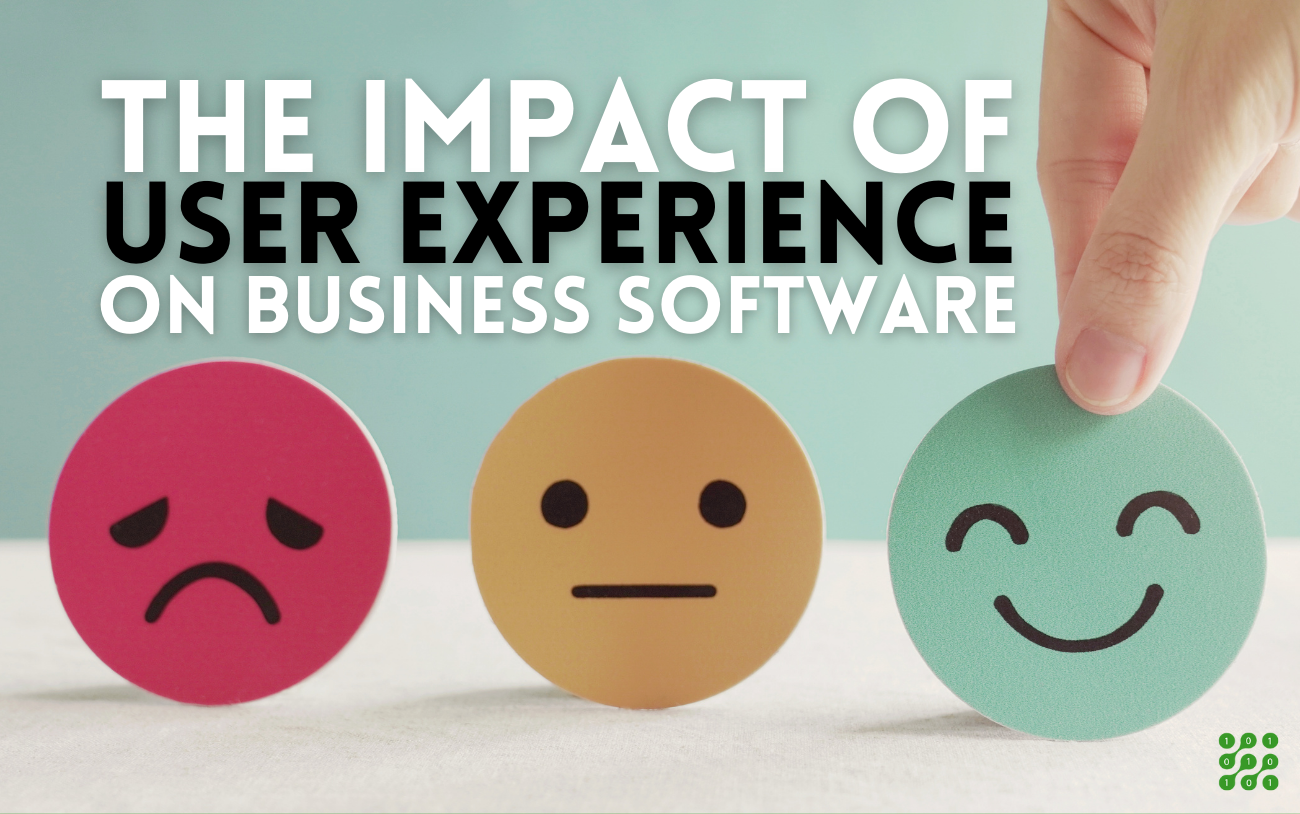The Impact of User Experience on Business Software

User experience (UX) has become a crucial factor to consider when developing business software. With the rise of tech solutions and increasing competition in the market, to overlook UX when designing software products would be a huge mistake.
As defined by the International Organisation for Standardisation (ISO), user experience is “a person's perceptions and responses that result from the use or anticipated use of a product, system or service†(ISO 9241-210:2019). What's actually meant, in simpler terms, is that UX refers to how a user feels and interacts with a product, and in the context of developing business software, providing a positive user experience is essential
The Evolution of UX in Business Software
Over the years, UX design has evolved significantly in business software. Previously, software interfaces were often complex and difficult to navigate, leading to user frustration and, ultimately, decreased productivity.
However, recently, there's been a shift towards more intuitive and user-friendly designs. This shift has been largely influenced by factors such as tech advancements, changing user expectations, and competition among software providers. Users now seek software that's functional, aesthetically pleasing, and easy to use, so as a result, UX designers have been focusing on creating clean, simple, and intuitive interfaces that contribute to a positive user experience.
The Key Elements of Effective UX Design
Creating a positive user experience isn't just about making software look pretty; it hinges on several elements working together. These key elements include usability, accessibility, performance, and aesthetics.
Usability - how easy it is for users to accomplish their tasks within the software. This includes factors such as navigation, workflow, and overall user-friendliness.
Accessibility - how easily the software can be used by individuals with disabilities, ensuring inclusivity for all users.
Performance - the speed and efficiency of the software, as well as its ability to handle large amounts of data without crashing.
Finally, aesthetics play a crucial role in UX design, as the typography, colours and design of the software contribute to its overall look and feel and help create positive engagement with users.
The Impact of Good UX on Productivity and Efficiency
Business software with a well-designed UX directly improves productivity and efficiency. Intuitive interfaces reduce the learning curve, enabling users to quickly familiarise themselves with the software and perform tasks efficiently. Streamlining workflows, simplifying complex processes, and providing contextual help can significantly enhance productivity. Additionally, UX design that considers accessibility and inclusivity ensures users of all skill levels can effectively use the software, further improving efficiency.
Moreover, a positive user experience also increases employee job satisfaction, resulting in higher retention rates and lower training costs for companies.
UX Design Best Practices
To achieve optimal UX when developing business software, certain best practices should be followed
- Conduct user research to gain insights into user needs and expectations.
- Keep the interface simple and intuitive, minimising cognitive load on users.
- Prioritise functionality and efficiency over excessive and unnecessary features.
- Test and develop versions based on user feedback to continuously improve the UX.
- Ensure consistency in design elements, layout, and interactions throughout the software.
How Custom Software Development Delivers an Exceptional UX
When it comes to business software, opting for custom development provides significant advantages in terms of UX. Off-the-shelf software often doesn't fully meet a company's specific needs, and the end result is being stuck with a clunky interface that frustrates users. In contrast, with custom software, the user experience can be tailored to fit the exact needs and preferences of the business.
Furthermore, a custom software development team like Megabits will work closely with clients to conduct user research, gather feedback and continuously improve the UX as needed. This level of collaboration and adaptability results in a highly efficient and productive end product.
Conclusion
In today's market, where user expectations are higher than ever, providing a positive user experience is crucial for business software to stay competitive. By focusing on key elements of UX design and following best practices, Megabits can work with you to create custom software that not only looks good but also improves your business's efficiency and productivity. Contact us today to get started with a customised software solution that delivers an exceptional user experience. So, the next time you consider investing in business software, remember UX isn't just a nice-to-have feature; it's a critical component for usability and efficiency. We'll build software to keep your users happy, and you can watch your business thrive!